Stefano
Romano: Insurgent flâneur seeks intellectual community
One of Stefano Romano's most recent works, realised
in Tirana and Prishtina, is titled landscape 151205, and consists of
an unusual urban scenery. The vertical elements that compose the skyline
of the city are not buildings, but names of the people the artist met
and had a conversation with during the span of a day. It is a landscape
made of meetings, in which you can visualize - in just one panorama
- time, space and human relationships. At the same time you can zoom
into the chain of unwritten dialogues, and read the recurring names
of the individuals that shaped one day of the life of the artist.
The way in which Romano allows human intercourses to acquire solidity
and three-dimensionality is, at the same time, extremely simple and
exceptionally powerful.
It is surprising and horrific to think how used we are at organising
our days following the coordinates of time and space that traverse our
diaries, and how human relationships end up being the result of a life
shaped like an excel sheet, instead than its major coordinate.
This work is certainly reminiscent of the practice of the International
Situationists. At the same time, in this as in other works of Stefano
Romano, the solitaire flâneur turns into a social being, and his
political aim finds expression in the desire and need of being part
of a community.
Through relatively simple gestures Romano generates
multiple relationships among individuals and groups, and instigates
debates on political and social issues.
In 2003, for one of the galleries of the GAMeC (Modern and Contemporary
Art Gallery), Bergamo, Romano realised a site-specific installation:
Bookshop. The work was inspired by the fact that a bookshop previously
occupied the space of the gallery. Trough the Internet, flyers and posters,
Romano spread an appeal, inviting individuals to donate books to become
part of his artwork and, ultimately, be given to the libraries of two
jails in Rome and Bergamo. More then 3000 volumes were arranged by the
artist into the shape of an island, which kept expanding during the
period of the exhibition.
The same year another site-specific wok, Flags,
was inspired by the spontaneous gesture of many individuals who hung
flags or banners outside their windows in order to express their position
on the war against Iraq. For his participation to a group show at Viafarini
gallery, Milan, Romano approached the people leaving in the flats overlooking
the internal courtyard where the gallery is located. He asked them to
choose an image they wanted to have printed on a flag and hung from
their windows, as a symbol of their personalities and beliefs.
Both these installations generate relationships that, even if ephemeral
or indirect, push people to communicate, interrogating themselves about
their neighbors, or taking part to a collective present for people that
we normally simply ignore the existence of.
In Noi Aminamo l'Albania (We Love Albania), exhibited
at Tirana Biennale 3, 2005, the journey of Stefano Romano goes through
the history of the relationship between two countries connected and
divided by all major events of the recent history of our continent:
war, cold war, economical exploitation and immigration.
The multi-media installation is an ironic and thought provoking work
that envisions the building of a bridge between Italy and Albania. Full
colour, computer generated images of the bridge are printed on big posters
and projected into a wall. A stool promoting the bridge offers information
and more images of the construction, which should be realised recycling
the material of old Italian buses that still circulate in Albania. A
few badges are also on display, featuring the slogan 'Noi Amiamo l'Albania'
inscribed into a pink hart.
A video on monitor shows archive material together with footage shot
by the artist. Archive images of a propagandistic documentary praise
the resources of Albanian land. A man who leaves in Tirana talks through
his collections of coins, showing the ones with the image of Italian
king Vittorio Emanuele at the time he ruled Albania. An old Albanian
woman, despite sitting in the dusty roads of Tirana, tries to preserve
her dignity combing her air and washing her face with the water from
a small bottle. A short section of one of Berlusconi's speeches documents
him saying "They are the Italy that hates, we are the Italy that
loves". Another video on monitor shows a series of interviews with
Albanian citizens. Asked to comment on the news regarding the building
of the bridge, many interviewed do not seem to be surprised or shocked
by the news.
Noi Amiamo l'Albania is an intelligent, witty and ironical work. It shows how complex is the relationship between two countries that are so close and historically so different, the country of origin of Romano and the country where he has recently chosen to live. On one side the history of a nation that started late and ruinous campaigns of colonisation during fascism; that have a history of exporting businesses whose irresponsible management is dictated by cynicism and greed; and is represented by a prime minister whose position on immigration has never contributed to diminish the social fear of 'the other'. On the other side a chaotic and energetic country that in 1990 ended 47 years of isolationist communism; where traditional values live together with the dream of owning a powerful car, or a least an old Mercedes; were most people can already speak a bit of Italian, if they are not even fluent in it; and where the dream of going to Italy dominated and still dominate the life of many, despite the desperate journey of many fellow countrymen experienced across the Adriatic sea, and despite the constant cases of repatriation.
Since his arrival in Tirana in the autumn 2004,
on the side and as part of his artistic practice, Stefano Romano has
also been running a curatorial programme under the name 1.60 Insurgent
Space. The project was born out of the desire of spreading artistic
initiatives throughout the city. These have materialised in exhibitions,
performances or ephemeral interventions, and the project has been operating
on a regular basis despite the nearly complete lack of funding. The
spaces used until now include private apartments, empty buildings, public
spaces and the street. These initiatives normally last only one day,
carving a brief but always challenging presence within the city. While
contesting conventional definitions of artistic practices, these projects
aim at generating a debate about the present role of the artist.
These projects are normally the result of a collaboration between Romano
and another Albanian or international curator, and represent important
moments for sharing ideas and projects for the future. 1.60 Insurgent
Space initiates collaborations between artists and curators from different
countries, but also with students from the Art Academy in Tirana.
Among the projects curated by Stefano Romano,
was the public reading of Albanian artist Alban Hajdinaj's Manifesto
beyond the expiration deadline. The text, already published in 2005
in an Albanian newspaper, Metropol, was presented to the general public
and passersby on the evening of 25 January 2006, in an empty building
in front of a post office in Tirana. The text, in ten points, expresses
the need for Albanian artists to become aware and take part to the international
art scene without forgetting that the core of their discourse, as a
point of departure and arrival, is Albanian culture.
The Manifesto is highly critical of the current political situation
and of artistic practices that seem to be exclusively conceived in order
to satisfy the desire of a cultural market. Hajdinaj asks Albanian artists
to avoid exhibiting in public galleries, instruments of political power,
as well as in commercial galleries that only promote 'trivial commercial
art'. Artists are instead invited to choose alternative and unconventional
public spaces for the presentation of their work. In the last point
of the Manifesto, Hajdinaj opens instead of closing his proactive document,
instigating artists who do not wish to adhere to the Manifesto to come
forward and argue their reasons of disagreement. This text, which at
first can appear as a monolithic and self-sufficient statement, is a
strong appeal for generating a debate.
For another project curated by Stefano Romano on December 2005, Invisible City, Albanian artist Dren Maliqi stenciled in various spots of the city of Tirana the phrase "I need a radical change". Romano explained that this outcry first relates to the failure of the rebellion of the students of the Fine Arts Academy. No change was realized within the Academy, and Maliqi's desire for innovation was unfulfilled. At the same time, the need for a radical change, expressed and spread around the city, seems to reflect a deeper and more personal desire for transformation, and the awareness that any important change is first private and individual.
As these two curatorial projects illustrate,
Romano is interested in supporting artistic initiatives that insinuate
into the tissue of the city, occupying its surfaces and unused spaces
in order to give visibility to national and international artists' voice,
not just among the artistic circuit, but potentially to all citizens.
What is extremely interesting in Stefano Romano's practice and curatorial
projects is that he avoided the format of the collective. In contemporary
artistic practice collectives of artists with more or less radical political
views have been flourishing again in the '90s, in order to react to
contexts that are too institutional, commercial, or simply non-existent.
This is certainly the case of Albania, as of many other East European
countries, where collectives operate to organise exhibitions, events
and moments of dialogues, while defining their position against dated
or empty institutions. The risk of those collectives is often the one
of becoming rigid institutions themselves, legitimising the existing,
obsolete establishments, and ultimately accepting to use their spaces
or resources. Another danger is the one of self-marginalisation, which
involves the risk of becoming elitist and closed groups. 1.60 Insurgent
Space has been initiated to only last a limited period of time, and
it is based on temporary events and collaborations that operate in the
local while networking on the international scene.
Moreover, this project is particularly fascinating
because it takes place in a city, Tirana, whose spaces have not yet
been completely colonised for private and commercial uses.
All projects under the umbrella of 1/60 Insurgent Space have the side
effect of promoting the use of public space and the transformation of
private into public spaces. These initiatives encourage inhabiting the
city for public, cultural and free uses, and promote a vision of the
city as the arena where to exchange ideas, develop personal visions,
initiate debates and challenge the status quo.
Since the end of 2005, Stefano Romano has also
started an editorial project, publishing number zero of 1/60 Insurgent
Space on paper. The publication is a disarticulated collection of texts,
interviews and visual contributions on the relationship between art
and urban activism. While number 1 is expected to come out shortly,
a PDF version of number zero is available on the web: www.1-60insurgentspace.org.
Elena Crippa
Elena Crippa is a curator based in London
 |
|
|
||||||||||||||||||
 |
 |
 |
|
|||||||||||||||||
| |
|
|||||||||||||||||||
 |
|
|
|
|||||||||||||||||
| |
|
|||||||||||||||||||
 |
|
|||||||||||||||||||
 |
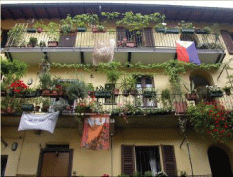 |
|
 |
|
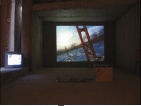 |
 |
|
|||||||||||||
| |
 |
|
|
|||||||||||||||||
| |
|
|
||||||||||||||||||
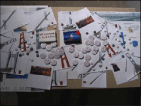 |
 |
|
||||||||||||||||||
| |
|
|
|
|||||||||||||||||
| |
|
|
|
|
|
|||||||||||||||
| |
|
|||||||||||||||||||
| |
|
|||||||||||||||||||
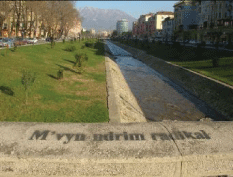 |
|
|||||||||||||||||||
| |
|
|||||||||||||||||||
| |
|
|
||||||||||||||||||
 |
|
|||||||||||||||||||
| |
|
|
||||||||||||||||||
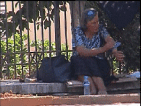 |
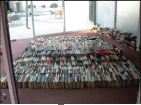 |
|
||||||||||||||||||
 |
|
|||||||||||||||||||
 |
|
|||||||||||||||||||
 |
 |
|
||||||||||||||||||
| |
|
|
|
|
|
|
|
|
|
|
|
|
|
|
|
|
|
|
|
|